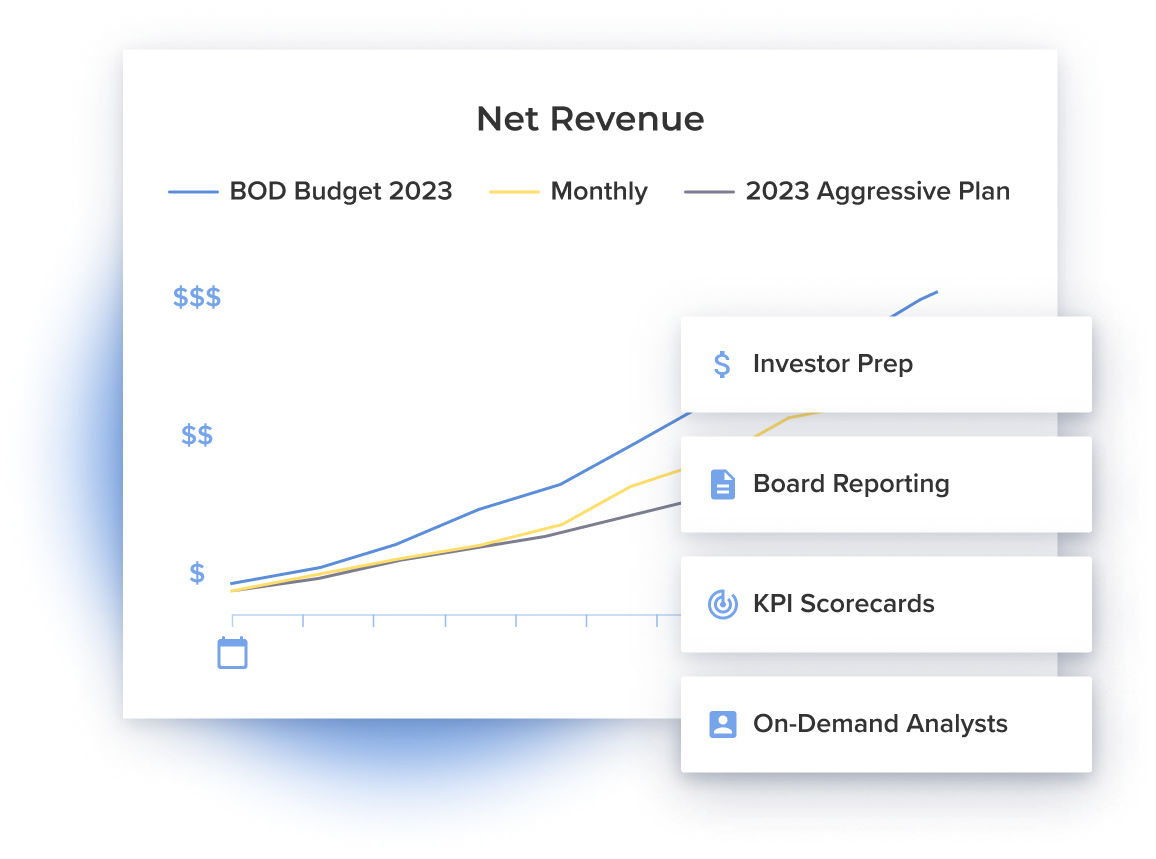Accounting for MCAs

The introduction of new credit and borrowing options for DTC and eCommerce brands has been incredible. In the past few years, we have seen a dizzying array of options from companies like ClearCo, Wayflyer, Shopify Capital, Settle, Ampla, and more. And while founders love easy access and fast money, their accountants and financial modelers are left trying to make sense of ever-evolving and changing terms.
Many of these products are purposely confusing and difficult to model. If you need help understanding the true cost of capital and how various products and offers meet your specific cash needs, please reach out to Bainbridge.
In this post, we are going to focus on the accounting treatment of MCA (Merchant Cash Advance) from providers such as Shopify Capital, ClearCo, and Wayflyer.
The basics:
- You get some money
- You have to pay back some higher amount of money
- They take a percentage of your sales until you pay back the higher amount
The terminology around all this is purposefully confusing. MCA providers are careful to not call their products loans in order to avoid regulations and usury laws. But don’t lose sight of the basics:
- If someone gives you money which they expect you to pay back, you are the Borrower
- They are the Lender
- The amount of money they give you is the Principal
- The fee they charge you for the use of that money is the Interest.
- The amount of time over which you pay back the Principal and Interest determines the effective Annual Interest Rate or Cost of Capital
A quick note about how to think of the Cost of Capital. If I give you $1,000,000 today and I ask you to pay me back $1,060,000 in one year, I am charging you 6% annual interest. But if I ask you to pay me that $1,060,000 a week from now, I am charging you more than a 300% annual interest rate.
All the warnings aside, MCA makes sense for a lot of companies in a lot of situations. Let’s face it, who else is stepping up that quickly with those dollars? So, you have taken some MCA. The money is in the bank. Good work.
But how do we properly account for this? We turned to AJ Stockwell at Climb CFO. AJ and his team work exclusively with DTC brands and combine top notch accounting with financial advice and next level service.
The Set Up
In QuickBooks, the way I do this is to set up 3 "Other Current Liability" accounts in the chart of accounts: A master account called something like "ClearCo Loan" and two sub-accounts which are "ClearCo Advance" and "ClearCo Fee."
In the Chart of Accounts, it will look like this:

This is for those who charge a flat fee and effectively take it out of the initial deposit. E.g., you might take an advance of $100k but your balance to pay starts at $110k.
The Journal Entries
The transaction to record the deposit to the bank account is:
Debit Cash $100k
Debit ClearCo Fee $10k
Credit ClearCo Advance $110k
(For Clear specifically, you probably get a virtual debit card rather than a deposit to your operating account. In that case, I add ClearCo as a cash account on the chart of accounts.)
In QuickBooks, rather than using a Journal Entry, use the Deposit transaction type with a positive $110k to the ClearCo Advance account and a negative $10k to ClearCo Fee as shown here:

Recording it this way gives the ClearCo Fee account a negative balance. A negative liability like this is effectively a prepaid expense, and really what we're doing here is prepaying that $10k fee, right?
As payments are made, they get posted to ClearCo Advance to pay down that $110k.
The Fee Amortization
Now we need to amortize/expense that prepaid fee as we use the capital. I haven't found perfect guidance on how to time this. It's hard to pin down with the term being variable.
Option 1
One option is to estimate the number of months you will use and expense it straight-line over that period.
Option 2
Another would be to post the expense in proportion to the payments to the loan itself. For example, if you pay $11k back on the loan, split it as $10k of principal and $1k of interest expense. This isn't perfect because it might not reflect higher interest while the principal is higher, but this method usually approximates it in a way that’s “good enough.”
Good Enough or Perfect?
Neither of these methods are perfect, and the difficulty is again due to the fact that the term of the loan is uncertain.
Depending on your brand's external reporting requirements, after full repayment, you could go back and true up the interest recognition based on the principal outstanding at the end of each month.
I post this to Interest Expense, so the Journal Entry is to Debit Interest Expense and Credit ClearCo Fee, which increases this contra-loan account balance closer to 0.
There you have it. Any comments or suggestions? We are all ears!
This post was co-authored with AJ Stockwell, Founder of Climb CFO. Check them out here!
Subscribe to our newsletter

Ready to see what you can do with Drivepoint?
Learn how other consumer and CPG brands are driving margin and cashflow with Drivepoint







